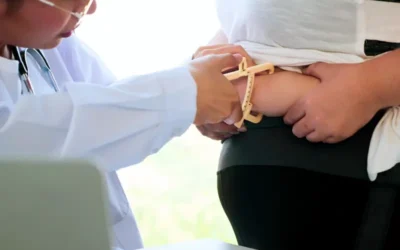Medical billing and coding companies receive a large volume of Transitional Care Management (TCM) claims to process. TCM services help reduce readmissions, which are a huge cost for the health care industry, especially if the patient is readmitted in the 30-day post-discharge window. According to a Pharmacy Times article, Medicare spends up to $15 billion each year to cover the cost of readmissions, which includes $12 billion for cases that could be preventable.
TCM covers services provided to patients whose medical and/or psychosocial problems require moderate or high-complexity medical decision making during discharge from the following settings:
- Inpatient Acute Care Hospital
- Inpatient Psychiatric Hospital
- Long Term Care Hospital
- Skilled Nursing Home
- Inpatient Rehabilitation Facility
- Hospital Outpatient Observation or Partial Hospitalization
- Partial Hospitalization at a Community Mental Health Center
- Patient’s community healthcare setting, including home, domiciliary, rest home, or assisted living.
Beginning 2013, the Centers for Medicare & Medicaid Services (CMS) began paying separately for TCM services with the goal to improve care and reduce readmissions. CMS estimated that two-thirds of all hospital discharges would be eligible for TCM services. Family practice physicians, internal medicine and pediatric specialists, gerontologists, nurse practitioners and physician assistants are eligible for TCM reimbursements. TCM is reportable for both new and established patients.
One of the main goals of TCM is to ensure that the highest-risk patients get the care they need as soon as they leave a hospital or other facility. TCM involves primary care services such as medication reconciliation, scheduling well-timed primary care visits, developing a plan to address common problems, and coordination with other providers of post-acute care.
Knowing the nuances of coding and billing TCM is crucial to prevent claim denials:
CPT codes
The two codes to report TCM services are: 99495 (moderate complexity medical decision making) and 99496 (high complexity medical decision makingS). The patient contact requirements to bill these codes are as follows:
- 99495
- Initiating patient or caregiver contact (direct, telephone, or electronic) within two business days of inpatient discharge
- Conducting a face-to-face visit with moderate-complexity medical decision making within 14 calendar days of discharge
- 99496
- Initiating patient or caregiver contact (direct, telephone, or electronic) within two business days of inpatient discharge
- Conducting a face-to-face visit with high-complexity medical decision making within seven calendar days of discharge
These TCM codes are not valid for patients who have only been seen in the emergency department.
Medicare billing requirements
- Only one practitioner may report TCM services and only once per patient within 30 days of discharge.
- The same individual or group may not report another TCM for any subsequent discharge(s) within 30 days
- If the patient is readmitted during the 30-day period, TCM services can be reported providing the services described by the code are reported by the practitioner during the 30-day period, including the time following the second discharge.
- The provider can bill for TCM services following the second discharge or a full 30-day period as long as no other practitioner bills the service for the first discharge.
- If two physicians submit claims for TCM services for the same patient during the 30 days following discharge, Medicare will pay only the first eligible claim. Other providers can continue to report other reasonable and necessary services provided to patients during the 30-day period, including other evaluation and management (E/M) services.
Date and place of service on TCM service claim
The date of service reported on the claim should be the 30th day, since the 30-day period for the TCM service begins on the day of discharge and continues for the next 29 days. CMS pays both facility and non-facility TCM services. Physicians should report TCM services with the place of service appropriate for the face-to-face visit.
Documentation requirements
Claims for TCM services should be accompanied by appropriate documentation, including:
- date of initial discharge
- date of post-discharge communication with patient or caregiver
- date of the first face-to-face visit
- medication reconciliation
- complexity of medical decision-making (MDM) as moderate or high
Medical Decision-Making
Not all post-discharge patients qualify for TCM services as the TCM codes specify medical decision-making (MDM) of either moderate or high complexity. CMS defines MDM as “the complexity of establishing a diagnosis and/or selecting a management option”, which is determined by considering the following factors:
- The number of possible diagnoses and/or the number of management options that must be considered
- The amount and/or complexity of medical records, diagnostic tests, and/or other information that must be obtained, reviewed, and analyzed
- The risk of significant complications, morbidity, and/or mortality as well as comorbidities associated with the patient’s presenting problem(s), the diagnostic procedure(s), and/or the possible management options
Reporting other services during the TCM period
- Medicare guidelines state that other reasonable and necessary Medicare services may be reported during the 30 day period. Additional services provided during the 30-day period (i.e., diagnostic tests, evaluation and management [e/m] services following the initial visit) can be billed separately. The following should not be billed when billing TCM services:
- Care plan oversight
- HCPCS Codes G0181 and G0182
- End Stage Renal Disease (ESRD) services
- 90951-90970 – Home health agency services
By ensuring continuity of communication and care, patients are assured of a smooth transition from a hospital or other health care facility to his or her community setting. This enhances care, helps prevent unnecessary readmissions, improves the patient’s quality of life, reduces anxiety for the patient and his or her caregiver, and decreases overall health care expenditure. As physicians coordinate with other health care providers to manage their patients’ care transitions, outsourcing medical billing and coding is a feasible strategy to overcome the complexities of reporting TCM services and prevent claim denials.




